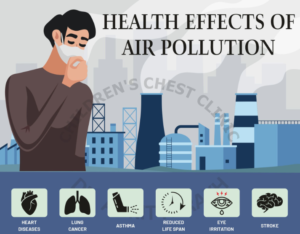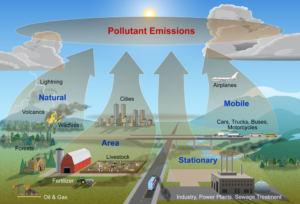The Silent Threats: Assessing Environmental Pollutants’ Invisible Impact on Human Health

The rising concern over environmental pollutants is not borne of groundless fears or overzealous activism. On the contrary, scientific evidence of extensive harm to ecosystems and human health continues to paint a grim picture of the situation. As we grapple with the dual challenges of climate change and public health crises, it has become imperative to understand the depth of the issue and how it is interwoven with our daily lives. Environmental pollutants are not just a threat to nature – they pose a silent danger that’s palpable in the air we breathe, the water we drink, and even in the food we eat.
Unveiling the Menace in Our Environment
The environment is teeming with a myriad of contaminants that find their way into our natural habitats through a variety of human activities. From the industrial revolution to the modern age of consumerism, our relentless usage of materials and energy has led to the emission of substances that can cause significant harm. These pollutants cover a vast spectrum, including heavy metals, pesticides, plastics, and airborne particles, and their effects can be local or global, acute or chronic. But what many fail to recognize is that they are insidiously seeping into our very existence, setting the stage for myriad health ailments.
The Culprits at Large
- Airborne Toxics: The air we breathe carries invisible traces of pollutants such as sulfur dioxide (SO2), nitrogen oxides (NOx), and volatile organic compounds (VOCs). Their inhalation not only causes respiratory issues but also has far-reaching implications for cardiovascular health and can even affect cognition.
- Water Contaminants: Rivers, lakes, and oceans once considered to be clean sources of nourishment have been tarnished by the presence of mercury, lead, and an alarming concentration of microplastics. Consumption of such tainted water can lead to developmental issues and organ damage.
- Toxicants in Soil: The ground beneath our feet, the very soil crucial for agriculture, is being poisoned by heavy metals and chemicals, which then find their way into our food chain, contaminating crops and livestock.
The Looming Health Crisis

It’s not an exaggeration to say that environmental pollution constitutes a time bomb for human health. The World Health Organization (WHO) estimates that nearly one-quarter of all global deaths can be attributed to the environment. The range of maladies spawned from pollution is staggering – from respiratory diseases like asthma and bronchitis to chronic conditions such as cancer and heart disease.
A Breath Away from Harm
- Respiratory Ailments: Pollutants in the air are a leading cause of respiratory illnesses, especially in urban areas with high vehicular and industrial activity. Fine particulate matter (PM2.5) is particularly notorious for causing bronchial problems and can lead to severe conditions like chronic obstructive pulmonary disease (COPD).
- Cardiovascular Impacts: The cardiovascular system is not immune to the effects of pollution. Studies have associated long-term exposure to air pollutants with an increased risk of heart attacks, strokes, and hypertension.
On the Verge of a Public Health Crisis
Environmental pollution not only inflicts individual suffering but also burdens healthcare systems. It is a public health crisis that demands urgent attention from policymakers and health organizations.
Bridging the Gap
Understanding the complex web of interactions between environmental pollutants and human health is only the first step. Translating that knowledge into action is where real change occurs. There are several key avenues through which we can mitigate the risks and work towards a healthier, cleaner future.
Policy Interventions and Environmental Regulations
Stricter regulations on emissions, waste management, and industrial processes can significantly reduce the concentration of pollutants in our environment. Similarly, measures such as the Clean Air Act in the United States have led to substantial improvements in air quality since its enactment.
Technological Innovations and Green Practices
Advancements in technology play a pivotal role in curbing pollution. Everything from the development of clean energy sources to the implementation of sustainable farming practices can contribute to a healthier environment and, consequently, a healthier population.
Public Awareness and Individual Responsibility
Raising awareness about the dangers of environmental pollutants is crucial. Every individual can make a difference through their choices and behaviors, whether by supporting eco-friendly products, participating in community clean-up activities, or advocating for change at a local level.
Conclusion: The Path Ahead
The fight against environmental pollutants is an endurance race, not a sprint. It requires a multi-faceted approach that combines scientific research, policy-making, technological innovation, and collective action. While the threats may seem insurmountable, history has taught us that determination and concerted effort can lead to lasting change. The well-being of current and future generations hinges on the steps we take today to protect our environment from the onslaught of pollutants that jeopardize our health and vitality. It’s a formidable challenge, but it’s one we must face with resolve and vision.
By acknowledging the depth of the problem and the stakes at hand, we can mobilize a global movement that champions the sanctity of our environment and safeguards the health of all who inhabit this planet. The invisible impact of environmental pollutants on human health should not remain a silent story – it’s time for it to be heard and addressed with the urgency it commands.
